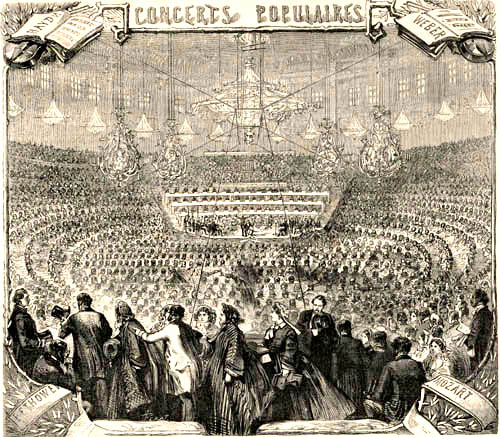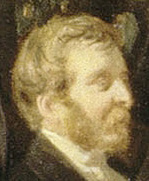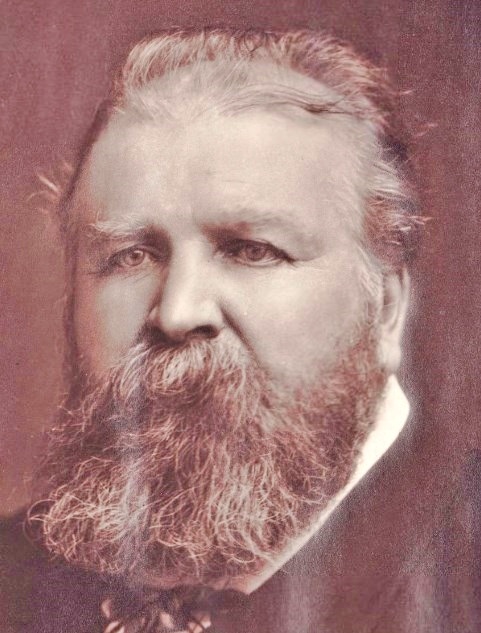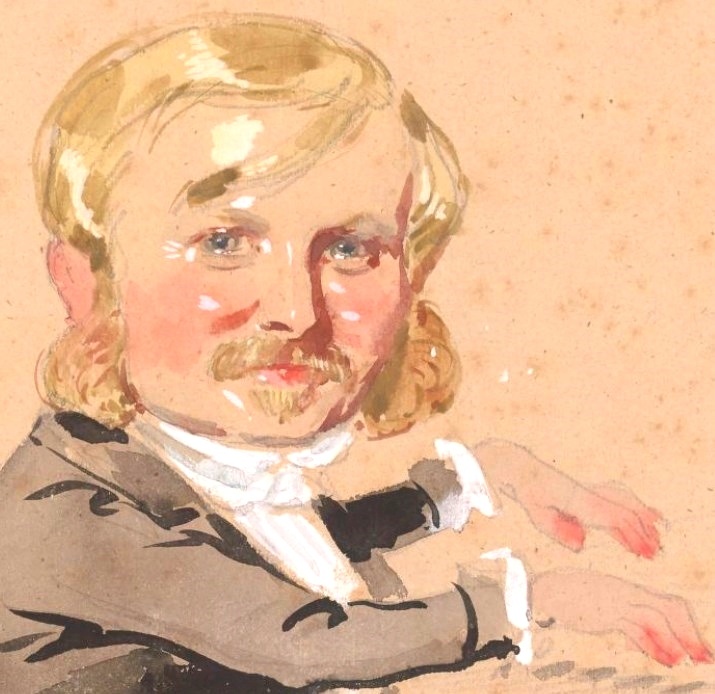Jules Étienne Pasdeloup (1819-1887), Conductor, pianist, concert innovator
1st image: Soirée; 2nd: photo by Lopez (1870); 3rd: caricature by Eugène Giraud drawn early 1858 at Nieuwerkerke's soirée.

Jules Pasdeloup was responsible for organizing the musical performances at de Nieuwerkerke’s vendredi-soirées. He is best known, however, for pioneering an immensely popular concert tradition at the Cirque d'Hiver in Paris in 1861. Through these events, the composer of Polka de Paris (1846) introduced both contemporary French composers —such as Gounod70b and Camille Saint-Saëns— and classical masters like Haydn, Mozart, and Beethoven to audiences that had previously lacked the means or interest to attend formal concerts. His initiative laid the foundation for today’s concert series, which often focus on specific composers or musical genres.
Less widely known is Pasdeloup’s early role in private concerts, which captivated Princess Mathilde in the early 1850s with his energetic approach to musical programming. Under her patronage, he assembled a group of young conservatory students (aged 13 to 15) to perform in intimate settings—an ensemble known as the Société des Jeunes Artistes. Up to that point, only the most distinguished Conservatoire performers were expected to appear in concerts under the direction of Narcisse Girard23.
These youth performances fit seamlessly into de Nieuwerkerke’s soirées, allowing him to introduce emerging talents and fresh compositions to his aristocratic guests.
As maestro di cappella, Pasdeloup played a significant role in shaping musical events at the Louvre from December 1852 onward, including his introduction of the young Bizet—whom he presented as "le charmant petit virtuose."
The many intricate ties between these elite guests become apparent through Pasdeloup's dedication of his second quartet to conservator Villot72, and Saint-Saëns' dedication of his second symphony to Pasdeloup.


